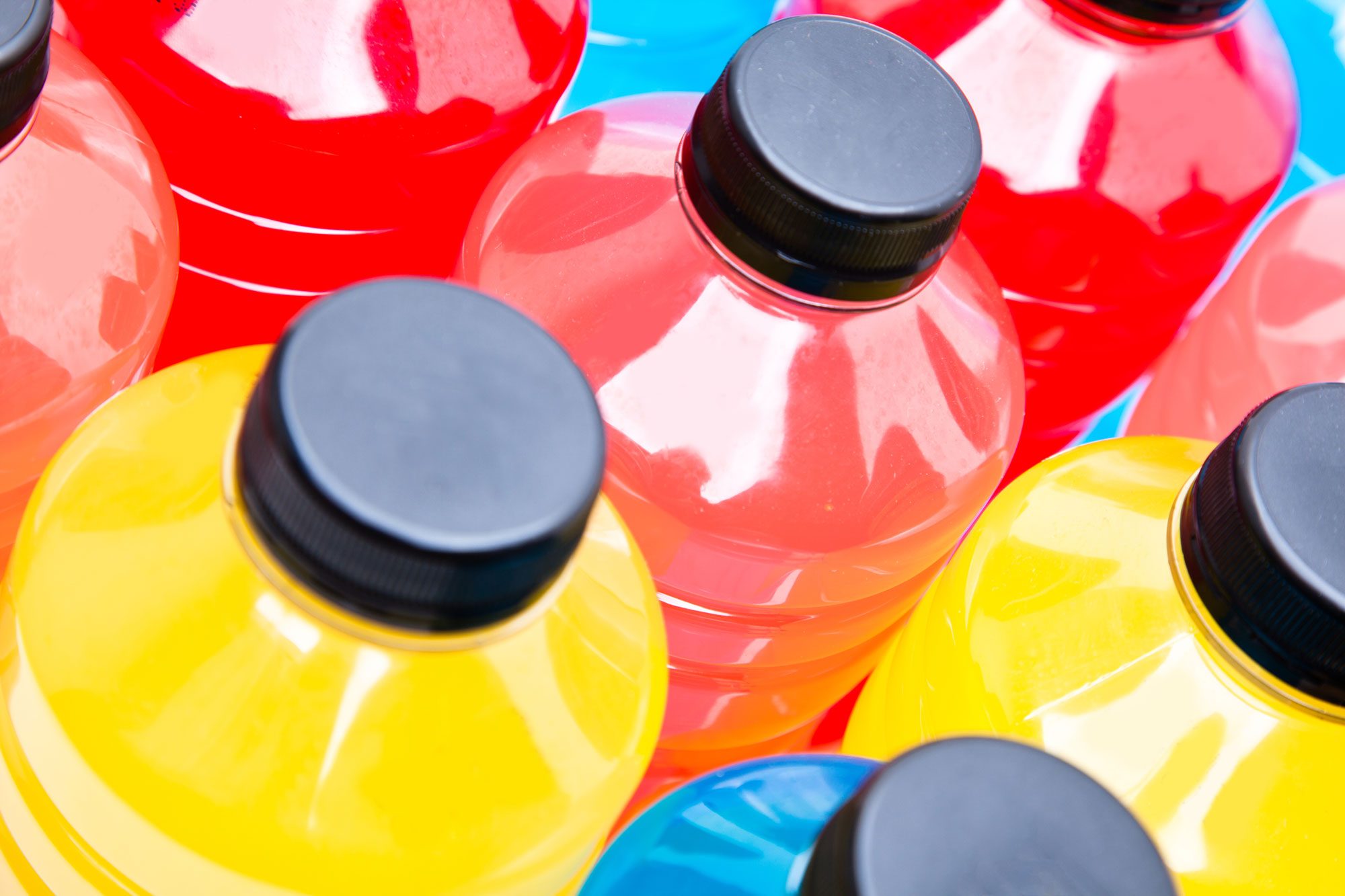One trainer, wellness coach, and coffee fanatic set out to track the effects of changing up his routine with daily energy drinks.

I Drank Energy Drinks Every Day for a Week—Here’s What Happened

I’ll be honest: When I set out on my week of energy drinks, I knew it would be a struggle. Guzzling down sugary cans of funky-flavored energy drinks wasn’t exactly my idea of a good time—but hey, I love caffeine as much as anyone, and maybe a few days of experimenting with them would have me performing like those high-adrenaline athletes with Red Bull logos plastered across their helmets.
I wasn’t holding my breath, though.
Although energy-boosting drinks have a long history dating back into the mid-1900s, the heavily caffeinated beverages we most often associate with “energy drinks” like Red Bull, Monster, and Rockstar, didn’t show up on the American scene until the late 1990s and early 2000s. Since that time we’ve seen a wave of formulas attempting to cater to every student, athlete, and professional looking for that little kick.
These days, energy drinks are a category all their own popularity, so popular that they’ve come under scrutiny concerning their overall safety and the lack of regulation…especially in the pediatric arena. In a 2021 meta-analysis published in the peer-reviewed medical journal Sports Health, researchers concluded that energy drink consumption significantly increased the odds of insomnia, jitteriness and hyperactive symptoms. The researchers followed with a recommendation to avoid frequent energy drink consumption, with “frequent” meaning five to seven drinks per week.
To try to find out why for myself, I embarked on a seven-day expedition of daily energy drink consumption. Here’s what I found.
31 Surprising Energy-Boosters That Aren’t Coffee
I had more energy
It should probably go without saying, but I did indeed feel an energy boost from the drinks. It’s likely that was a result of the caffeine content. “Caffeine is a stimulant that blocks the effects of a chemical called adenosine, which makes you feel sleepy. You then feel more alert and energetic, which is why many people drink coffee or tea to stay awake,” as noted by WebMD. With the experimental beverages ranging from 111 mg to 200 milligrams (mg) per serving, the drinks did indeed provide me with a moderate pick-up. For comparison, a typical cup of coffee usually contains around 90 milligrams of caffeine.
All that said and in full transparency, I have a high tolerance to caffeine and typically start my day with a pretty hefty dose. A Starbucks Venti Pike Place would not be an uncommon find in my hand, which reportedly comes in with a whopping 410 milligrams of caffeine per serving. The FDA has stated 400 milligrams to be the recommended upper limit for daily caffeine intake, which I probably exceed on a regular basis. That is to say that using the energy drinks as a replacement for some of my morning coffee consumption gave me the energy boost that I’m simply used to experiencing.
What I didn’t notice was any increase in energy above and beyond what I typically experience with a strong cup of coffee. My workouts were the same post-consumption, and the added ingredients touted for their energy benefits, such as taurine, b-vitamins, sugar, and herbal extracts didn’t seem to have much of an additional energy effect.
Here’s How Much Caffeine You Can Really Have in a Day
I crashed
Probably one of the most concerning components of many of the energy drinks was their sugar content. One popular brand has an astounding 54 grams of sugar per can, which measures out to nearly five tablespoons. That’s a lot of sugar, and as someone who strives to keep refined sugar to minimum, this was a big change for me. I found myself experiencing a significant crash and dump in energy in the hours following consumption, along with the return of some intense sugar cravings.
The Healthy @Reader’s Digest’s Medical Review Board co-chair Latoya Julce notes, “Sugars such as sucrose, immediatehigh fructose corn syrup and glucose are added in high amounts to energy drinks to help with energy, which then causes the crash. Not only are these drinks bad for you, they are addicting.”
We know sugar isn’t good for us, and sweetened beverages have shown to be a major contributor to over-consumption of sugar. Meghen Bishop, a San Diego-based certified nutritionist, noted that “the daily recommended value of added sugar for a 2000 calorie (adult) diet is 50 grams, and 54 grams is far too much to be consuming in one sitting.” She added that “this will eventually lead to overconsumption of simple sugars, which will be stored as fat when not being used for energy. One drink has already maxed out the recommended daily sugar intake.”
Of course, energy drink companies have attempted to answer concerns regarding sugar with alternatives using artificial sweeteners. Although artificially sweetened drinks weren’t off the table for this experiment, a very recent study linking Sucralose to DNA damage had anything containing Sucralose as a no-go for me. Celsius did have a no-sugar option sweetened with Stevia, which I found did provide that same spike in energy without the crash of the high-sugar competitors.
My urine looked like anti-freeze
We all expect our urine to exit with a little tinge of yellow color, but the urine that followed the energy drinks was something to take note of. Looking closer to the color of your Sharpie highlighter, it was obvious that I was excreting something different.
It turns out that most of the energy drinks are loaded with B-vitamins, one of which is Riboflavin (B2). B-vitamins are an essential nutrient for our bodies to function properly, but excess B-vitamins that can’t be used aren’t stored in the body and are instead filtered out and excreted through our urine. The result is a urine color that looks like it should glow when you turn the lights out, with Riboflavin being the primary contributor.
Bishop added her nutritionist perspective that “although there is not an upper-limit on B-vitamin intake, some may leave you with side effects at higher levels. Pantothenic Acid (B5) can cause diarrhea and GI disturbances, while Niacin (B3) can cause skin flushing and at worst, liver injury.” Both B3 and B5 are commonly found within energy drinks at 100% of recommended daily values. Keep an eye on that.
11 Silent Signs You’re Not Eating Enough Vitamin B12
Final thoughts
At the end of the day, energy drink consumption provided me with no more perceived benefit than my standard cup of coffee, and only made me feel worse with the excessive sugar content. And I certainly didn’t become a star athlete or step up to a new level of production. With a bevy of added ingredients and refined sugar, I’ll be sticking with my coffee routine and avoiding the cans.
Keep up to date on all things health and wellness with The Healthy @Reader’s Digest newsletter. Keep reading:





















